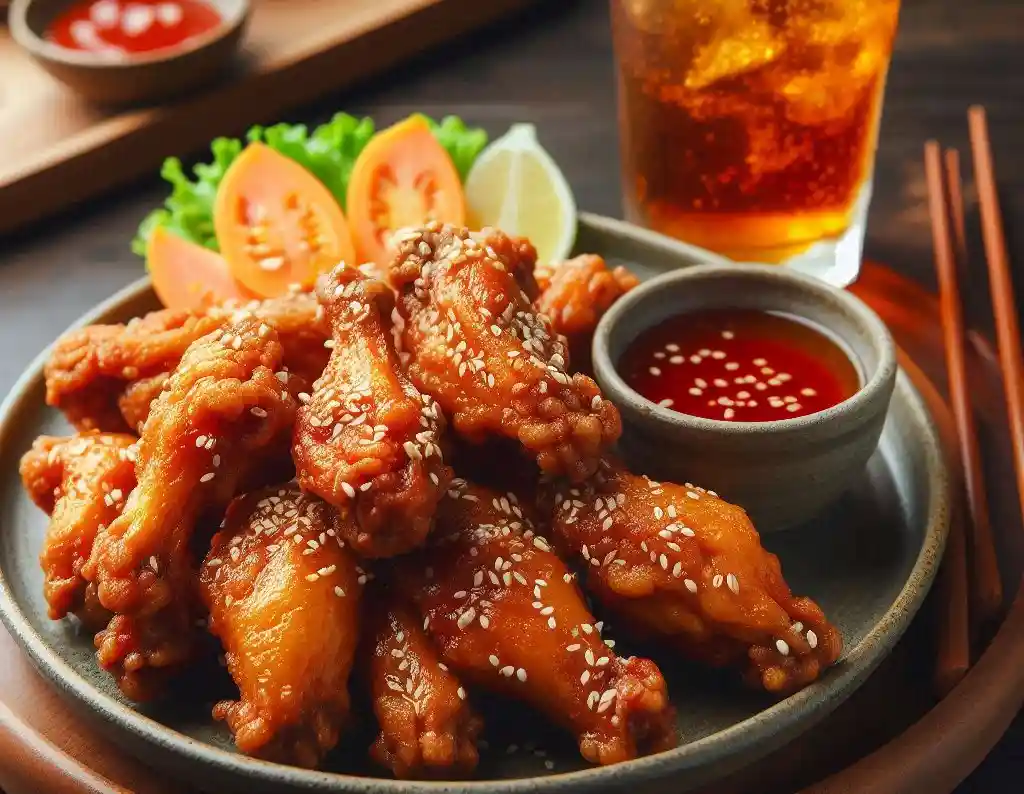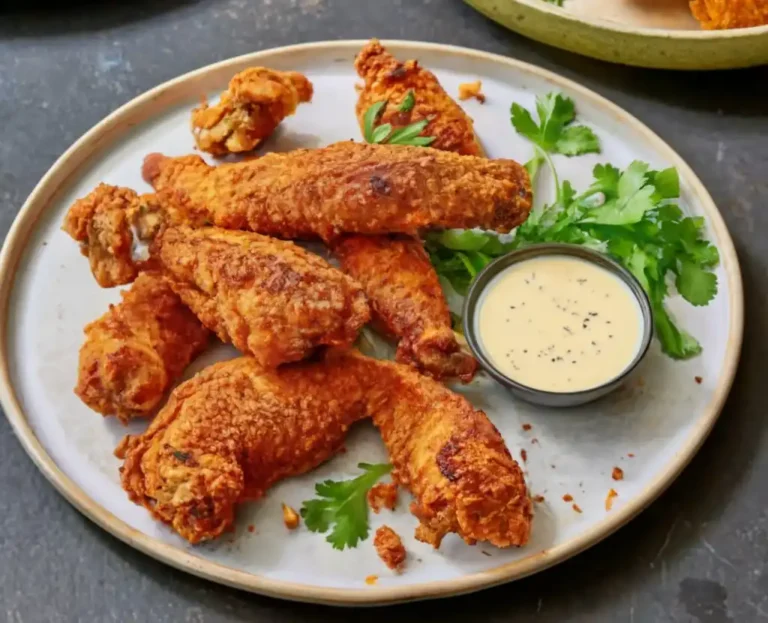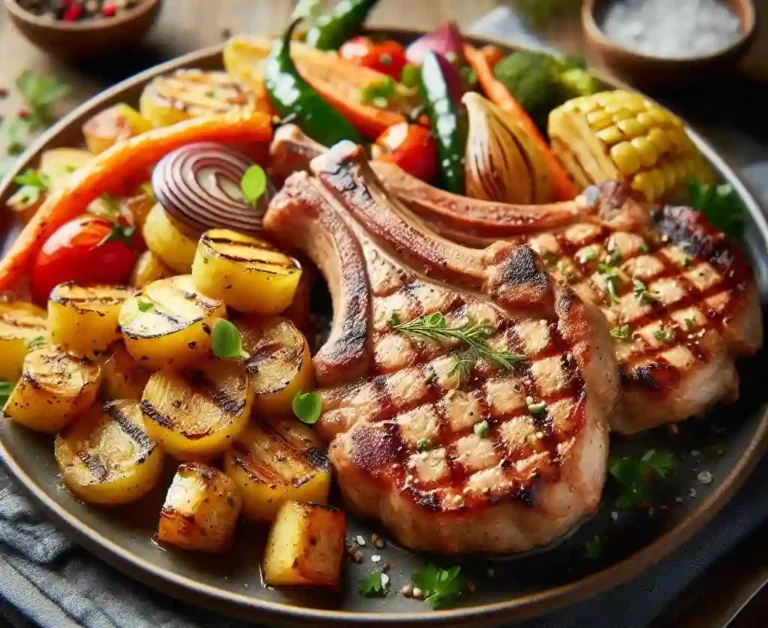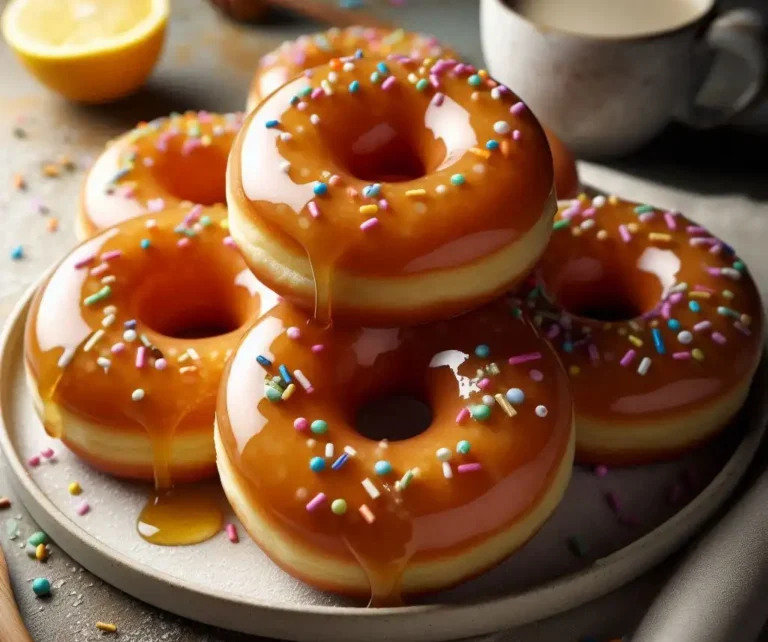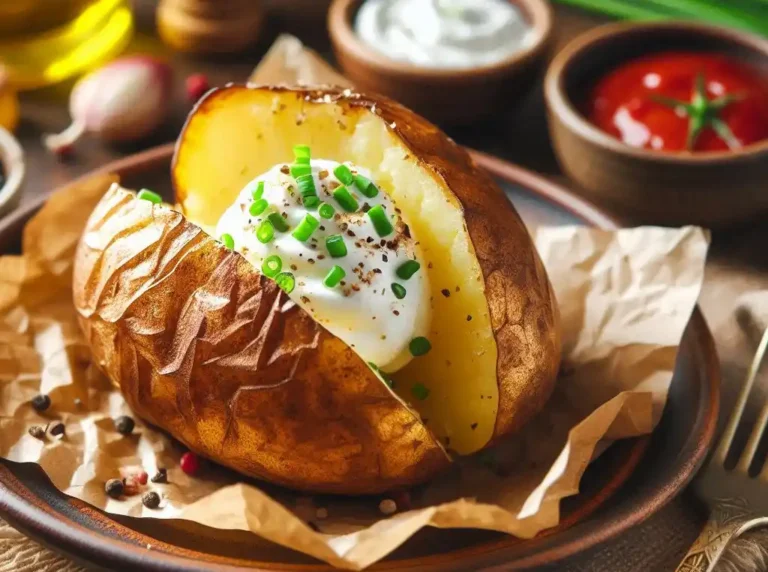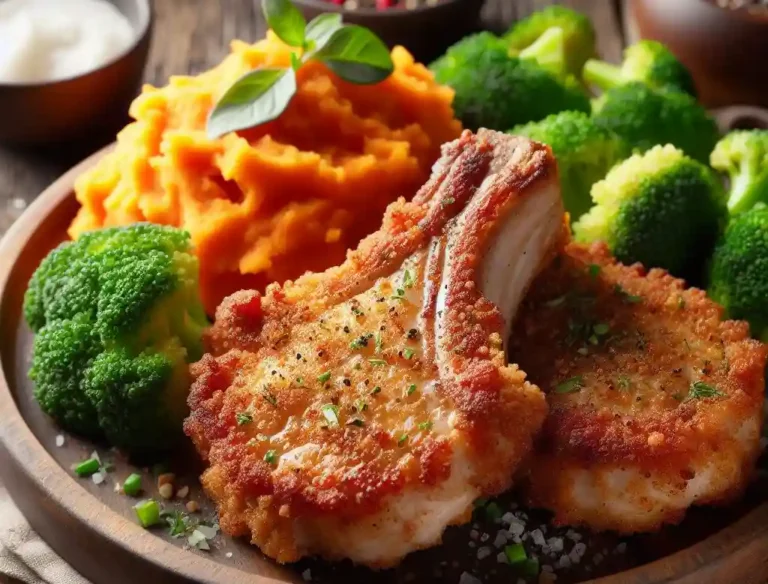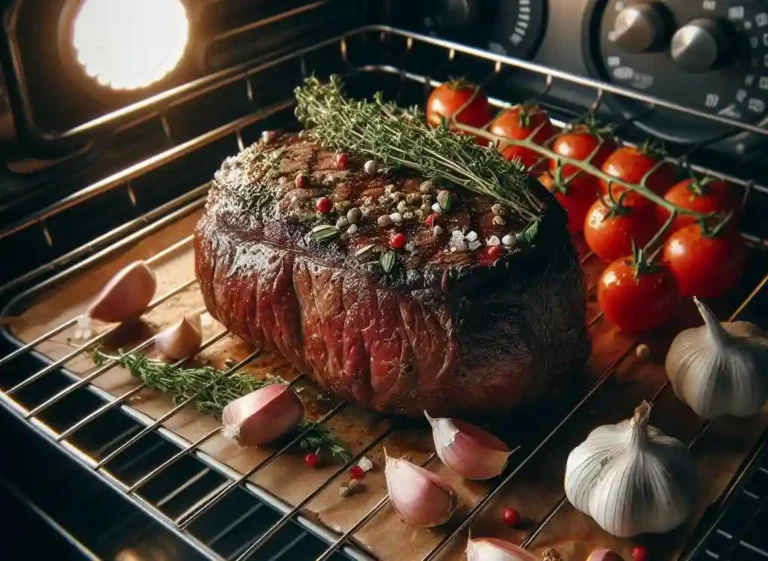How to Cook Deep Fried Chicken Tenders: Juicy and Crispy in 30 Minutes
Deep fried chicken tenders are a staple of comfort food, evoking memories of childhood summers and backyard barbecues.
But while they may seem like a simple pleasure, the perfect tender is an art form that requires a delicate balance of crispy exterior and juicy interior.
When done right, deep fried chicken tenders are a culinary delight that can elevate any meal from mundane to magnificent.
How to Cook Deep Fried Chicken Tenders: A Quick Overview

Preparation:
- Prepare the breading station:
- Flour mixture: 1 cup all-purpose flour, 1 teaspoon paprika, 1 teaspoon garlic powder, 1 teaspoon onion powder, salt, and pepper
- Egg wash: 1 cup buttermilk, 1 egg, 1 tablespoon hot sauce (optional)
- Breading mixture: 1 cup panko breadcrumbs, 1/2 cup grated Parmesan cheese (optional)
- Prepare the chicken:
- 1-2 pounds chicken breast strips, cut into strips (about 1-2 inches wide and 3-4 inches long)
Frying:
- Heat the oil:
- Use a deep frying thermometer to heat the oil to 350°F (175°C)
- Use a deep fryer or a large pot with at least 3-4 inches of vegetable oil (peanut or canola work well)
- Fry the chicken:
- Dip each chicken tender in the flour mixture, shaking off excess
- Dip in the egg wash, making sure to coat completely
- Roll in the breading mixture, pressing gently to adhere
- Fry in batches for 5-7 minutes or until golden brown and cooked through
- Repeat with remaining tenders
Drain and Serve:
- Remove the fried tenders from the oil with a slotted spoon and place on a paper towel-lined plate to drain excess oil
- Serve hot and enjoy!
Tips and Variations:
- For extra crispy tenders, chill them in the refrigerator for 30 minutes before frying
- Try different seasonings in the flour mixture, such as smoked paprika or dried herbs
- Experiment with different breading mixtures, like panko breadcrumbs with grated Parmesan cheese or crushed crackers
- Serve with your favorite dipping sauce, such as honey mustard or ranch dressing
Gather Your Ingredients: Essential Items for Deep Fried Chicken Tenders
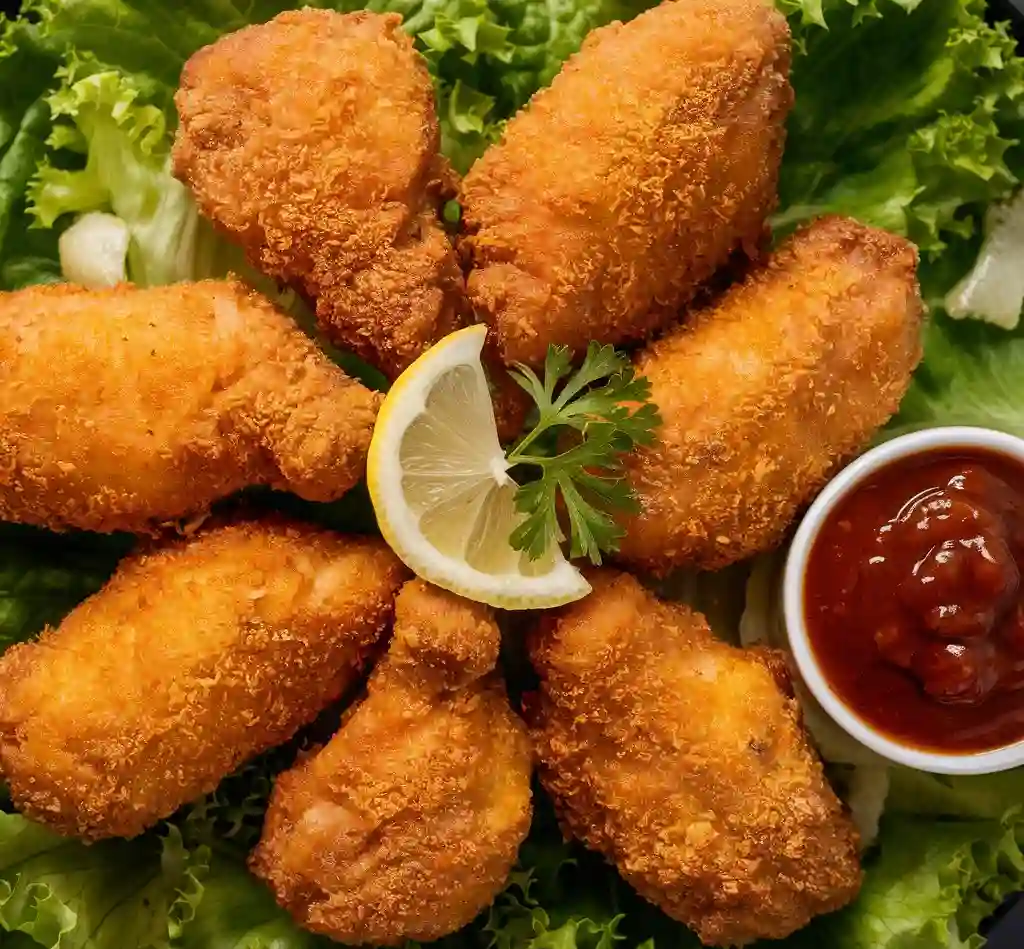
Meat and Poultry:
- 1-2 pounds boneless, skinless chicken breast or tenderloins, cut into strips (about 1-2 inches wide and 3-4 inches long)
Breading Station:
- Flour Mixture:
- 1 cup all-purpose flour
- 1 teaspoon paprika
- 1 teaspoon garlic powder
- 1 teaspoon onion powder
- Salt and pepper, to taste
- Egg Wash:
- 1 cup buttermilk
- 1 egg
- 1 tablespoon hot sauce (optional, for some heat)
- Breading Mixture:
- 1 cup panko breadcrumbs
- 1/2 cup grated Parmesan cheese (optional, for extra flavor)
Oils and Fats:
- Vegetable oil for frying (about 2-3 inches deep in a pot or deep fryer)
- Peanut oil or canola oil work well for frying
- You can also use lard or avocado oil for a different flavor profile
Seasonings and Spices:
- Salt, to taste
- Pepper, to taste
- Any additional seasonings you like, such as:
- Dried herbs (thyme, oregano, basil)
- Spices (cayenne pepper, smoked paprika, garlic powder)
- Lemon zest or lemon juice, for a bright and citrusy flavor
Miscellaneous:
- Paper towels or a clean kitchen towel, for draining excess oil
- A deep frying thermometer, to ensure the oil reaches the correct temperature (350°F or 175°C)
- A slotted spoon or skimmer, for removing fried tenders from the oil
- A plate or tray, lined with paper towels, for draining excess oil
- Your favorite dipping sauce, such as honey mustard, ranch dressing, or BBQ sauce
Optional Ingredients:
- Breading variations, such as:
- Crushed crackers or crushed nuts, for added crunch
- Grated coconut or sesame seeds, for a unique flavor and texture
- Marinades or brines, to add extra flavor to the chicken before breading and frying
- Different types of cheese, such as cheddar or mozzarella, for a cheesy twist
Preparation is Key: How to Prepare Chicken Tenders for Frying

Step 1: Prepare the Chicken
- Trim and Cut the Chicken:
- Trim any excess fat or connective tissue from the chicken breasts
- Cut the chicken into strips, about 1-2 inches wide and 3-4 inches long
- Remove Excess Moisture:
- Pat the chicken strips dry with paper towels to remove excess moisture
- This helps the breading adhere to the chicken better
Step 2: Season the Chicken
- Add Flavor with Salt and Pepper:
- Sprinkle both sides of the chicken strips with salt and pepper
- Add Additional Seasonings (Optional):
- Sprinkle with your favorite seasonings, such as paprika, garlic powder, or dried herbs
Step 3: Prepare the Breading Station
- Prepare the Flour Mixture:
- In a shallow dish, mix together 1 cup of all-purpose flour, 1 teaspoon paprika, 1 teaspoon garlic powder, and salt and pepper to taste
- Prepare the Egg Wash:
- In a separate shallow dish, whisk together 1 cup of buttermilk, 1 egg, and 1 tablespoon of hot sauce (optional)
- Prepare the Breading Mixture:
- In a third shallow dish, mix together 1 cup of panko breadcrumbs and 1/2 cup of grated Parmesan cheese (optional)
Step 4: Dredge and Dip the Chicken
- Dredge in Flour:
- Dip each chicken strip into the flour mixture, coating both sides evenly
- Shake off excess flour
- Dip in Egg Wash:
- Dip the floured chicken strip into the egg wash, making sure to coat completely
- Coat with Breading:
- Roll the egg-washed chicken strip in the breading mixture, pressing gently to adhere
- Place the breaded chicken tender on a plate or tray, ready for frying
Step 5: Chill and Fry
- Chill the Breaded Chicken (Optional):
- Refrigerate the breaded chicken tenders for 30 minutes to an hour to set the breading
- Fry the Chicken:
- Heat the oil to 350°F (175°C) and fry the chicken tenders in batches until golden brown and cooked through
The Secret to Crispy Coating: Choosing the Right Breading for Your Tenders
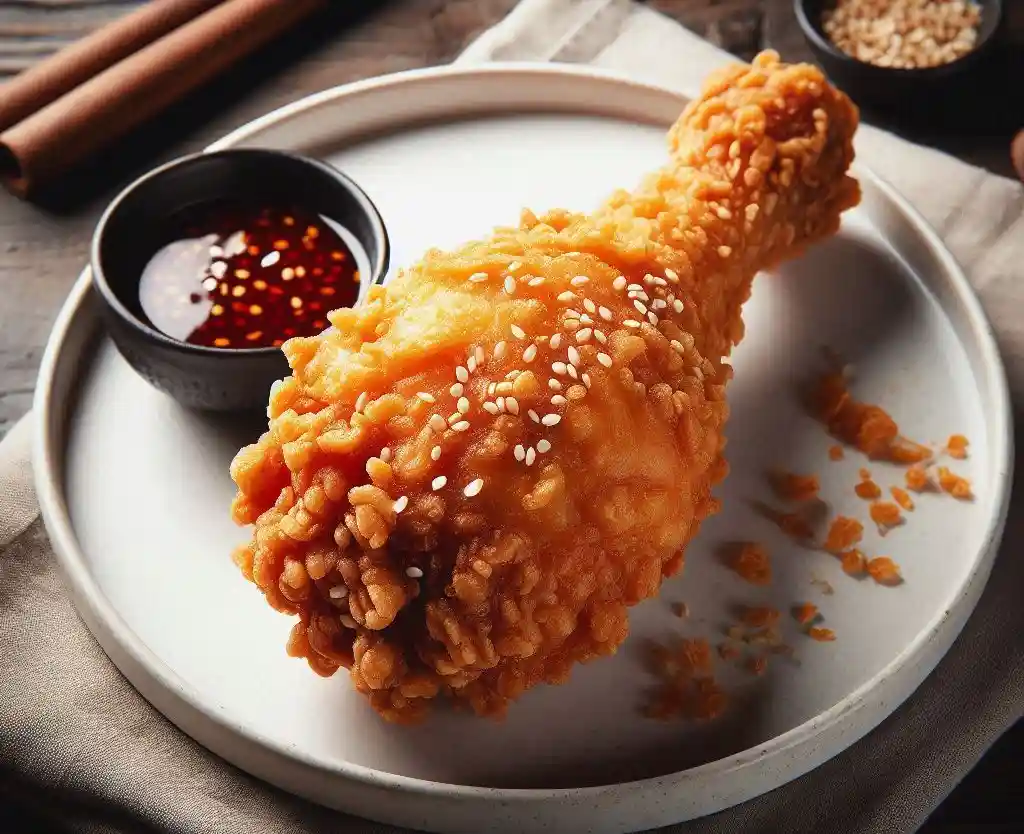
Types of Breading:
- All-Purpose Flour: A classic choice, all-purpose flour provides a light, delicate coating. It’s a great option for those who prefer a less crunchy exterior.
- Panko Breadcrumbs: Japanese-style breadcrumbs, panko is lighter and crisper than regular breadcrumbs. It produces a delicate, airy coating that won’t overpower the chicken.
- Bread Crumbs: Regular breadcrumbs are a popular choice for breading chicken tenders. They provide a crunchy exterior and can be seasoned with herbs and spices for added flavor.
- Cornflake Crumbs: Crushed cornflakes make a great breading for chicken tenders. They add a satisfying crunch and a touch of sweetness.
- Pretzel Crumbs: Pretzel crumbs bring a delightful salty flavor and a satisfying crunch to your chicken tenders.
- Potato Chip Crumbs: For a unique twist, try using crushed potato chips as a breading. They add a crunchy texture and a savory flavor.
Factors to Consider:
- Crunch Level: Do you prefer a light, delicate coating or a crunchy, satisfying exterior?
- Flavor Profile: Do you want to add a specific flavor to your breading, such as herbs, spices, or cheese?
- Texture: Do you prefer a light, airy coating or a denser, crunchier exterior?
- Dietary Restrictions: Are you catering to gluten-free, vegan, or other dietary requirements?
Tips and Variations:
- Spice Up Your Breading: Add herbs, spices, or grated cheese to your breading mixture for an extra boost of flavor.
- Mix and Match: Combine different types of breadcrumbs or add other ingredients, like crushed nuts or seeds, to create a unique breading blend.
- Experiment with Ratios: Adjust the ratio of breading to chicken to achieve your desired level of crunchiness.
- Try Different Grinds: Experiment with different grind sizes, from fine to coarse, to find the perfect texture for your tenders.
The Ultimate Breading Hack:
- Double-Dipping: Double-dipping involves dipping the chicken tender in flour, then in eggs, and finally in breadcrumbs. This technique ensures a crispy coating that adheres well to the chicken.
Heat Up the Oil: The Importance of Temperature Control for Deep Frying
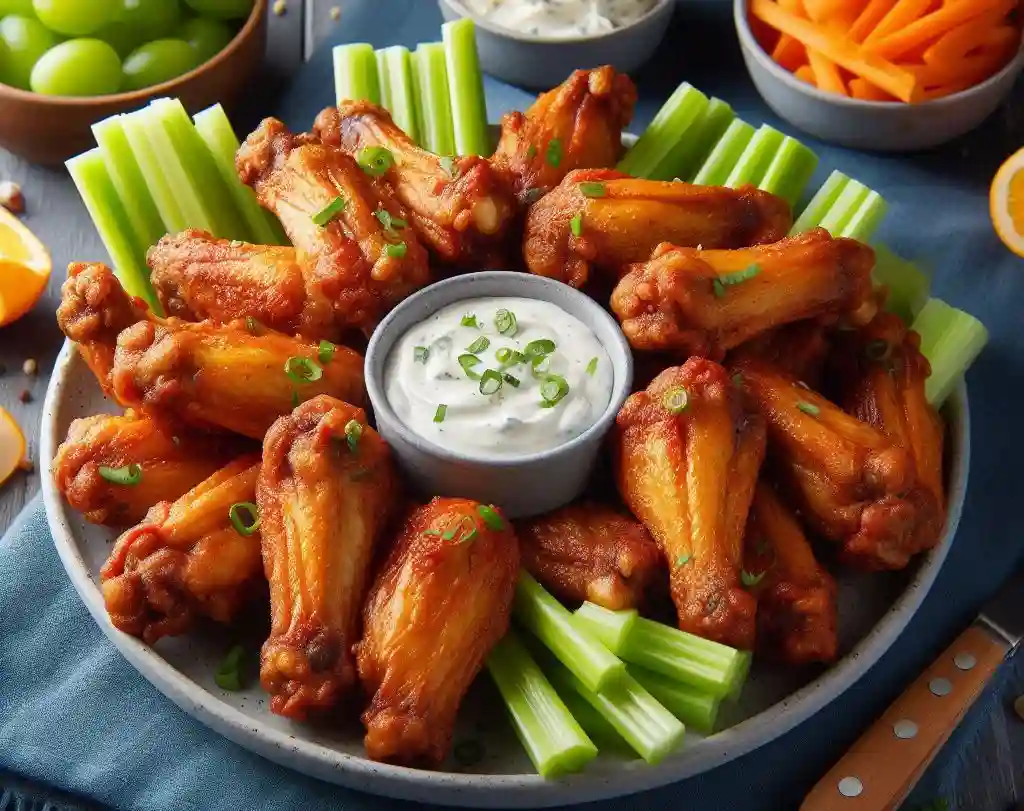
Why Temperature Control Matters:
- Food Safety: Frying at the wrong temperature can lead to undercooked or overcooked food, which can be a food safety hazard.
- Texture and Crispiness: The ideal temperature range ensures a crispy exterior and a tender interior.
- Oil Quality: Incorrect temperatures can cause the oil to break down, leading to an unpleasant taste and texture.
The Ideal Temperature Range:
- Between 325°F (165°C) and 375°F (190°C): This range is ideal for most deep-frying applications, including chicken tenders.
- Lower Temperatures: For delicate foods like fish or vegetables, a lower temperature (around 325°F) is recommended.
- Higher Temperatures: For thicker or denser foods like doughnuts or fried chicken, a higher temperature (around 375°F) is needed.
How to Achieve the Perfect Temperature:
- Use a Thermometer: Invest in a thermometer specifically designed for deep frying, as it will provide accurate readings.
- Monitor the Temperature: Continuously monitor the temperature during the frying process to ensure it stays within the ideal range.
- Adjust the Heat: Adjust the heat source (e.g., stovetop, deep fryer, or electric skillet) to maintain the desired temperature.
Common Temperature Control Mistakes:
- Overheating: Frying at too high a temperature can lead to burnt or overcooked food.
- Underheating: Frying at too low a temperature can result in greasy or undercooked food.
- Inconsistent Temperature: Failing to maintain a consistent temperature can lead to uneven cooking and poor texture.
Tips for Maintaining the Perfect Temperature:
- Use the Right Oil: Choose an oil with a high smoke point (e.g., peanut or avocado oil) to ensure it can handle high temperatures.
- Don’t Overcrowd: Fry in batches to prevent the temperature from dropping due to excessive food.
- Don’t Rush: Fry at a moderate pace to maintain the ideal temperature and prevent hotspots.
The Importance of Oil Quality:
- Choose the Right Oil: Select an oil that can handle high temperatures and has a neutral flavor.
- Filter and Clean: Regularly filter and clean the oil to prevent contamination and maintain its quality.
Frying 101: A Step-by-Step Guide to Cooking Deep Fried Chicken Tenders
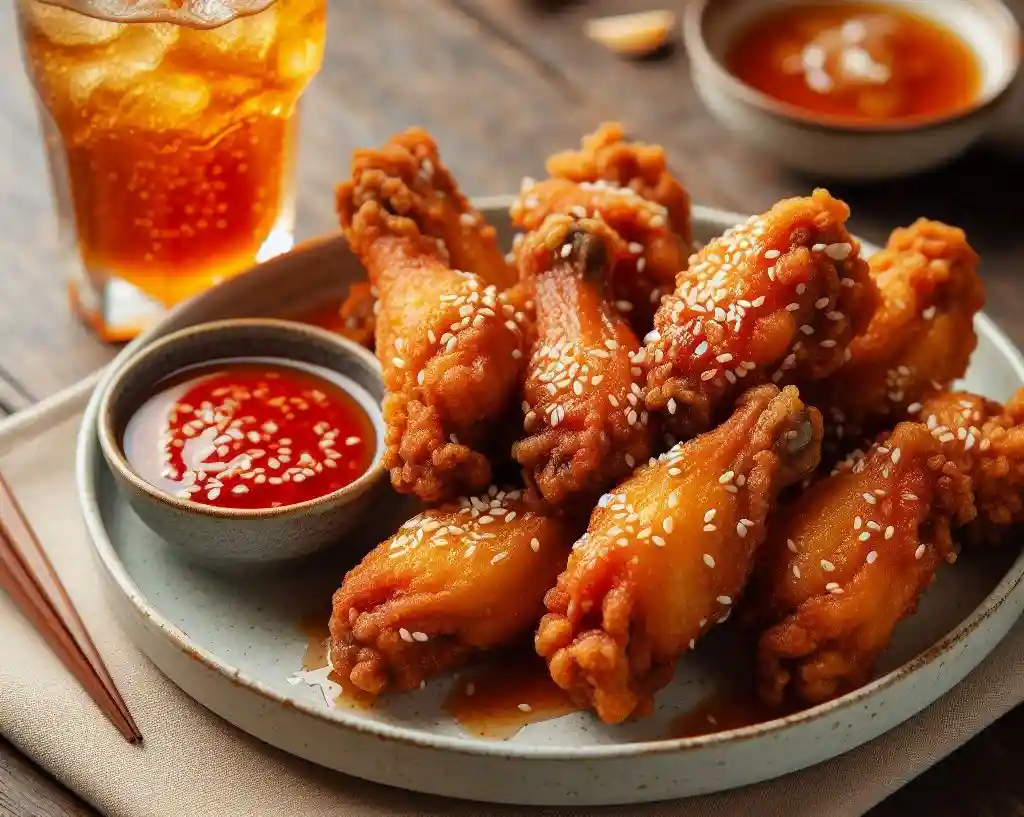
Step 1: Prepare the Chicken
- Trim and Cut the Chicken: Trim any excess fat or connective tissue from the chicken breasts. Cut the chicken into strips, about 1-2 inches wide and 3-4 inches long.
- Remove Excess Moisture: Pat the chicken strips dry with paper towels to remove excess moisture.
Step 2: Prepare the Breading Station
- Prepare the Flour Mixture: In a shallow dish, mix together 1 cup of all-purpose flour, 1 teaspoon paprika, 1 teaspoon garlic powder, and salt and pepper to taste.
- Prepare the Egg Wash: In a separate shallow dish, whisk together 1 cup of buttermilk, 1 egg, and 1 tablespoon of hot sauce (optional).
- Prepare the Breading Mixture: In a third shallow dish, mix together 1 cup of panko breadcrumbs and 1/2 cup of grated Parmesan cheese (optional).
Step 3: Dredge and Dip the Chicken
- Dredge in Flour: Dip each chicken strip into the flour mixture, coating both sides evenly. Shake off excess flour.
- Dip in Egg Wash: Dip the floured chicken strip into the egg wash, making sure to coat completely.
- Coat with Breading: Roll the egg-washed chicken strip in the breading mixture, pressing gently to adhere.
Step 4: Heat the Oil
- Choose the Right Oil: Select an oil with a high smoke point, such as peanut or avocado oil.
- Heat the Oil: Heat the oil to the ideal temperature range of 325°F (165°C) to 375°F (190°C).
- Monitor the Temperature: Continuously monitor the temperature during the frying process to ensure it stays within the ideal range.
Step 5: Fry the Chicken
- Fry in Batches: Fry the breaded chicken tenders in batches to prevent overcrowding and maintain the ideal temperature.
- Fry for 5-7 Minutes: Fry the chicken tenders for 5-7 minutes or until golden brown and cooked through.
- Drain Excess Oil: Remove the fried chicken tenders from the oil with a slotted spoon and place on a paper towel-lined plate to drain excess oil.
Step 6: Serve and Enjoy!
- Serve Hot: Serve the crispy, juicy, and delicious deep-fried chicken tenders hot and enjoy!
- Experiment with Dipping Sauces: Try different dipping sauces, such as honey mustard, ranch dressing, or BBQ sauce, to add an extra layer of flavor.
Don’t Overcrowd: The Importance of Frying in Batches for Perfect Tenders
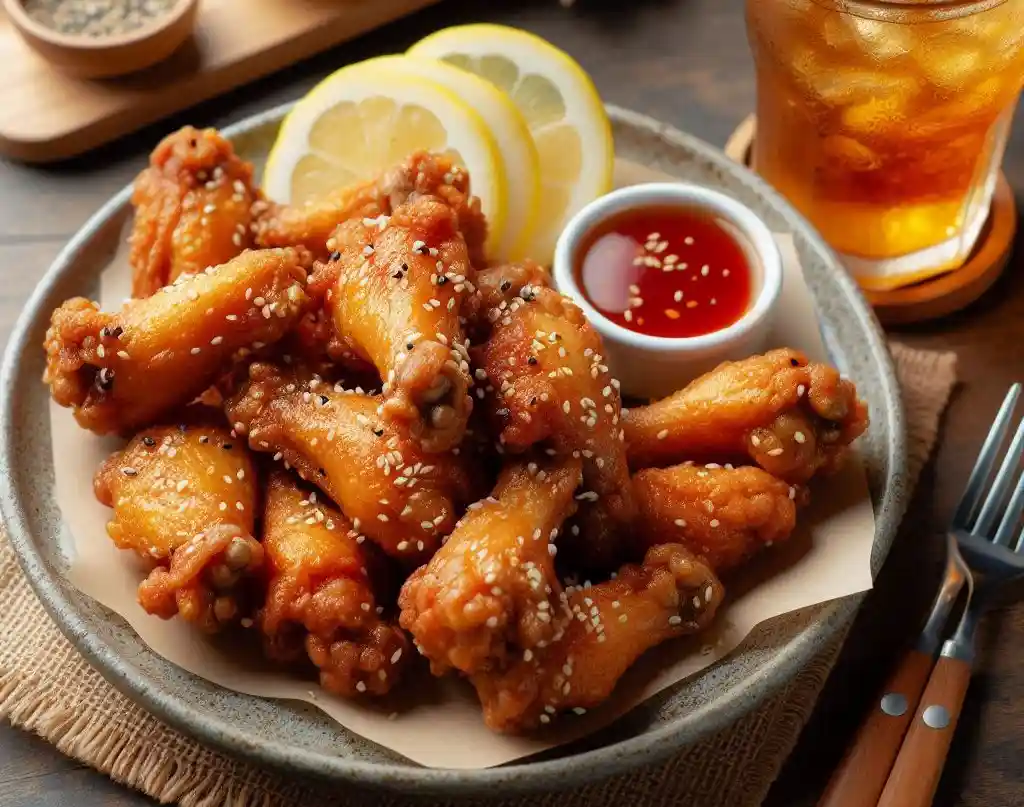
Why Frying in Batches Matters:
- Even Cooking: Frying in batches ensures that each tender is cooked evenly, preventing some parts from being undercooked or overcooked.
- Crispy Coating: Frying in batches helps maintain the crispy coating on each tender, preventing it from becoming soggy or greasy.
- Food Safety: Frying in batches reduces the risk of foodborne illnesses by ensuring that each tender is cooked to a safe internal temperature.
The Consequences of Overcrowding:
- Undercooked or Overcooked Tenders: Overcrowding can lead to undercooked or overcooked tenders, which can be a food safety hazard.
- Soggy Coating: When too many tenders are fried at once, the coating can become soggy and greasy, ruining the crispy texture.
- Oil Temperature Fluctuations: Overcrowding can cause the oil temperature to fluctuate, leading to uneven cooking and a higher risk of foodborne illnesses.
Tips for Frying in Batches:
- Fry in Small Batches: Divide the tenders into small batches, depending on the size of your pot or deep fryer.
- Monitor the Temperature: Continuously monitor the oil temperature to ensure it stays within the ideal range (325°F to 375°F).
- Don’t Rush: Fry in batches at a moderate pace to prevent the oil temperature from dropping too low.
- Use a Thermometer: Invest in a thermometer specifically designed for deep frying to ensure accurate temperature readings.
The Benefits of Frying in Batches:
- Perfectly Cooked Tenders: Frying in batches ensures that each tender is cooked to perfection, with a crispy coating and juicy interior.
- Reduced Oil Absorption: Frying in batches reduces the amount of oil absorbed by the tenders, making them less greasy and healthier.
- Increased Productivity: Frying in batches can increase productivity, as you can cook multiple batches in a shorter amount of time.
Drain and Serve: How to Remove Excess Oil from Your Deep Fried Chicken Tenders
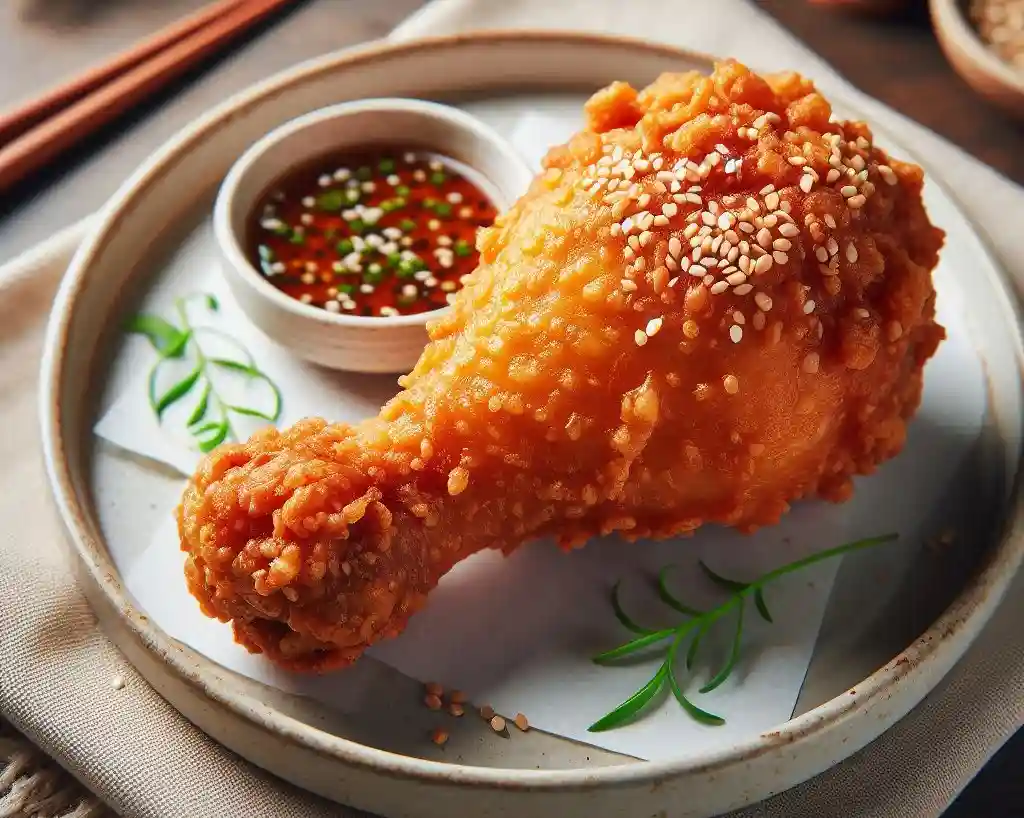
Draining Excess Oil:
- Use Paper Towels: Place a layer of paper towels on a plate or tray to absorb excess oil.
- Drain Excess Oil: Remove the fried chicken tenders from the oil with a slotted spoon and place them on the paper towels.
- Let it Drain: Allow the tenders to drain for 1-2 minutes to remove excess oil.
Alternative Draining Methods:
- Wire Rack: Place a wire rack over a baking sheet or tray to drain excess oil.
- Newspaper or Brown Paper: Use newspaper or brown paper to absorb excess oil.
Serving Suggestions:
- Serve Hot: Serve the crispy, juicy, and delicious deep-fried chicken tenders hot and enjoy!
- Dipping Sauces: Offer a variety of dipping sauces, such as honey mustard, ranch dressing, or BBQ sauce, to add an extra layer of flavor.
- Side Dishes: Serve with your favorite side dishes, such as fries, coleslaw, or a fresh salad.
Tips and Variations:
- Season Immediately: Season the fried chicken tenders with salt and pepper immediately after draining excess oil to enhance flavor.
- Add Fresh Herbs: Sprinkle fresh herbs, such as parsley or thyme, over the fried chicken tenders for added flavor and freshness.
- Try Different Breading: Experiment with different breading mixtures, such as panko breadcrumbs or cornflake crumbs, to create unique flavor profiles.
Tips and Variations: Taking Your Deep Fried Chicken Tenders to the Next Level
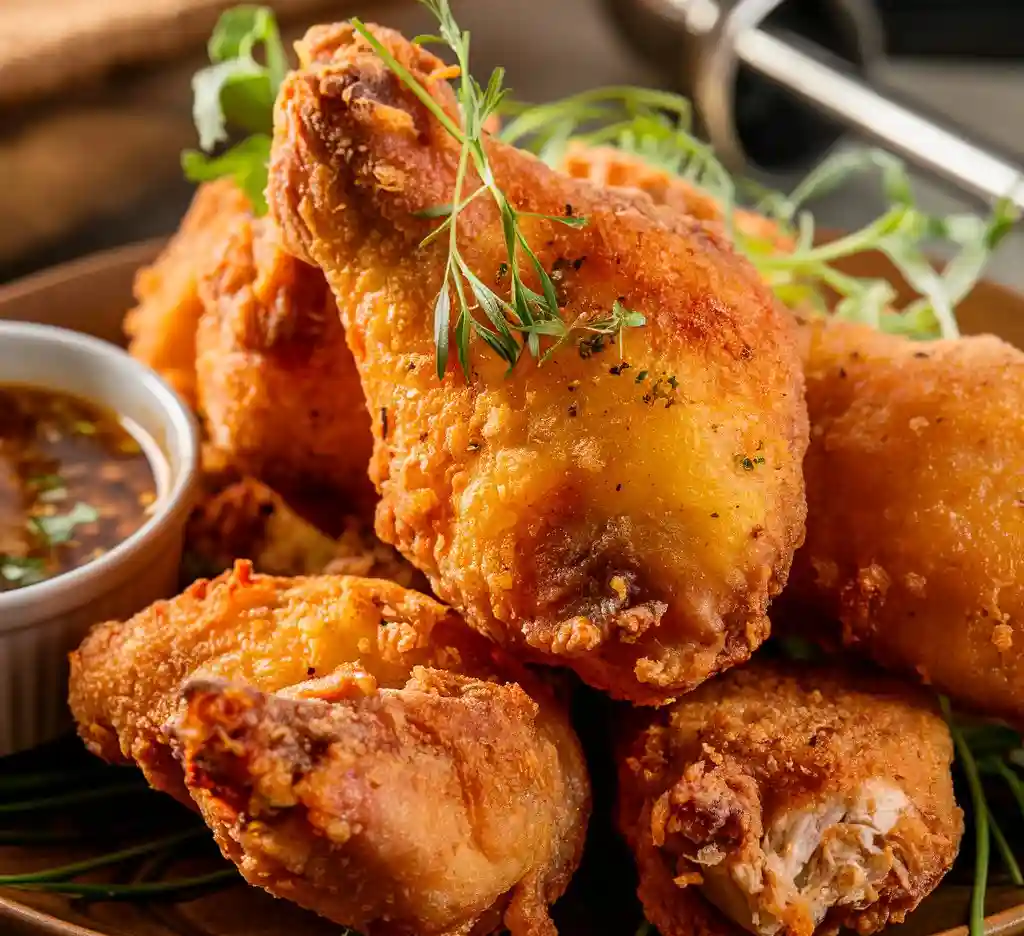
Tips for Taking it to the Next Level:
- Experiment with Breading: Try different breading mixtures, such as panko breadcrumbs, cornflake crumbs, or even crushed nuts or seeds, to create unique flavor profiles.
- Add Flavor to the Oil: Infuse the oil with flavor by adding aromatics like garlic, onions, or herbs to the oil before frying.
- Try Different Cooking Methods: Experiment with different cooking methods, such as air frying or pan-frying, to achieve a crispy exterior and juicy interior.
- Add a Crunchy Coating: Add a crunchy coating, such as crushed crackers or crispy fried onions, to add texture and flavor.
Variations to Try:
- Korean-Style Fried Chicken: Marinate the chicken in a Korean-inspired sauce, such as gochujang, before frying for a sweet and spicy flavor.
- Japanese-Style Fried Chicken: Use a light and airy breading mixture, such as panko breadcrumbs, and serve with a side of tonkatsu sauce.
- Southern-Style Fried Chicken: Use a spicy breading mixture, such as hot sauce and buttermilk, and serve with a side of mashed potatoes and gravy.
- Mexican-Style Fried Chicken: Use a spicy breading mixture, such as chili powder and lime juice, and serve with a side of salsa and avocado.
Global Inspirations:
- Kung Pao Fried Chicken: Add Sichuan peppercorns and chili flakes to the breading mixture for a spicy and numbing flavor.
- Jamaican Jerk Fried Chicken: Use a jerk seasoning blend, such as allspice and thyme, in the breading mixture for a Caribbean-inspired flavor.
- Indian-Style Fried Chicken: Use a spice blend, such as garam masala and cumin, in the breading mixture for a flavorful and aromatic flavor.
FAQs
Q: What type of oil is best for deep frying chicken tenders?
A: The best oil for deep frying chicken tenders is one with a high smoke point, such as peanut oil or avocado oil. These oils can handle high temperatures without breaking down or smoking.
Q: How do I prevent my chicken tenders from becoming greasy?
A: To prevent greasy chicken tenders, make sure to pat them dry with paper towels before dredging them in flour and frying. This helps remove excess moisture and prevents the oil from absorbing into the tenders.
Q: Can I bake my chicken tenders instead of deep frying them?
A: Yes, you can bake your chicken tenders in the oven instead of deep frying them. However, keep in mind that they may not be as crispy on the outside as deep-fried tenders.
Q: How do I store leftover deep fried chicken tenders?
A: To store leftover deep fried chicken tenders, let them cool completely before placing them in an airtight container in the refrigerator. They can be reheated in the oven or microwave when you’re ready to eat them.
Q: Can I make deep fried chicken tenders in advance?
A: Yes, you can make deep fried chicken tenders in advance, but it’s best to fry them just before serving for optimal crispiness. You can prepare the breading and chicken tenders ahead of time, but fry them just before serving.
Q: Are deep fried chicken tenders healthy?
A: Deep fried chicken tenders are not the healthiest option, as they are high in calories and fat. However, you can make them slightly healthier by using healthier oils and breading options, such as whole wheat flour or panko breadcrumbs.

Amelia Winthrop is the creative force behind Skillful Cooking, a blog that serves as a canvas for her culinary creations. With a philosophy that cooking should be accessible and enjoyable, Amelia crafts recipes that blend simplicity with sophistication. Her intuitive approach to the kitchen encourages others to embrace the joy of cooking and the pleasure of sharing meals with loved ones.

